Chapter Name: Industry of Pakistan.
Q: 1 Write a note on Sugar Industry
ANS At the of independence we had only 9 sugar mills. This number has gradually arisen to 78. Sugar factories are well distributed amongst three of our provinces; Punjab has 40, Sindh 32 and the NDFP 6 of them. All these factories are concentrated in the areas where sugarcane is grown. The industry has an installed capacity of 5.0 million tons.
Q: 2 Write a note on Iron / Steel Industry
ANS At the time of independence there was no steel mill in our part. First time, it was established in Chittagong. A big steel mill was then established near Karachi with the Assistance of the USSR. Steel mill has a capacity of one million tons of steel production per year. It can produce to three million tons.
Q: 3 Define Infrastructure.
ANS Infrastructure means the system or structure which are necessary for the operation of a country or an organization. It includes rails, water ways, Airways etc.
Q: 4 Give an account of the longest and the most important categories roads in Pakistan.
ANS At present total length of roads is 249,959 km. This total includes 138726 km good quality roads and 111,233 km low quality roads. Grand Trunk Road (G T Road) is the most important highways. Its total length is 1750 km.
Q: 5 Write a note on M-2
ANS Lahore – Islamabad Motor way (M-2) is six lane divided was built in 1997. It is a superb quality road and provides complete safety to the passengers. It has designated interchanges. It connects Lahore with Sheikhupura, Gujranwala, and Jehlum & Distt Attock. It terminates at Rawalpindi- Islamabad near Village Nasrullah.
Q: 6 Write a note on Pakistan National Shipping Corporation.
ANS It was established in Sep 1963. Now Pakistan has a modern fleet of 15 vessels with dead tonnage of 261,836. The ships are deployed on all important international routes.
Q: 7 Define E-Commerce
ANS E-Commerce suggests on line trading, buying and selling goods and services over networks. It refers to electronic transaction by using internet; it is safe method and less expensive.
Q: 8 Enumerate major advantages of the EC.
ANS 1) faster than physical means 2) less susceptible to human error 3) less expensive 4) more efficient 5) Provide better collaboration 6) cover a wide global market 7) Cross border marketing is possible.
Q: 9 What is a balance of Trade.
ANS The difference between the value of import & export is called balance of trade. Our balance of trade is import printed. We are consumption oriented.
Q: 10 How industrial development can be increased?
ANS 1) Increase exports 2) improve quality of production 3) improve quality of industrial labor 4) Increase Capital 5) Improve standard of products 6) improve infrastructure.
Culture of Pakistan
Q Write a Comprehensive note on the languages of Pakistan.
Languages of Pakistan
Ans People living in Pakistan speak different languages, but Urdu is our lingua Franca.
These languages are discussed below.
1) Urdu:
Urdu is our national language. It has played a vital role in the making of Muslim culture in subcontinent. Now, Urdu in Pakistan has widely accepted as the national language of Pakistan.
2) Punjabi
The Punjabi speaking people are spread throughout Pakistan.
About 48% of total house holds in Pakistan claim Punjabi as their mother tongue.79% of them are concentrated in Punjab.Siraiki ,potwari and Hindko are its important dialects Punjabi is an ancient language. It was spoken by ancient Harappa civilization (5000 B.C) In the pre-Muslim period Budhist priests composed poetry.Baba Farid –ud-din Ganj Shakar has been accepted as the first poet of this language.Shah Hussain, Sultan Bahu, Hulleh Shah,Waris Shah, Fazal Shah, Mian Muhammad ,Ghulam Farid are its eminent Sufi poets. Founder of Sikh religion Baba Guru Nanak also delivered his message in Punjabi verse. At the creation of Pakistan Punjabi literature entered a new era. Punjabi is introduced as an elective subject in university of Punjab up to MA & PhD degrees. A numbers of journals are published in Punjabi.
3) Sindhi
Sindhi speaking people form 12 % of population.52 % of Sindhi speak Sindhi.Sindhi has many dialects:Vicholi is Spoken in central Sindh Lasi in Lasbella (Baluchistan) Lar in southern Sindhi.Thari in Thar Desert.Sindhi is an ancient language .It was spoken across river Indus Before Christ ( 2000-3000)Arabic script is used for writing Sindhi.Holy Quran was first translated in Sindhi. Shah Abdul Latif Bhattai & Sachal Sarmast are its two famous Sufi poets.Makhdoom Muhammad Hashim was an eminent scholar who wrote 150 books. Mirza Qalich Baig was an other writer in British period who wrote about 400 books. Sheikh Ayaz, Prof Karim Bakhsh, Asad Ullah Bhutto are modern Sindhi Writers.Sindhi is also used as court and official language in Sindh.
4) Pashto:
Pashto speaking families’ form 13.2% of total population .More than 68 % families in NWFP speaks Pushto.About 25% people speak Pushto in Baluchistan, 3% in Sindh and less than 1% in Punjab.Pushto is also spoken in the districts of Attock & Mainwali.Pushto was firstly written in kharoshti script.In the age of Muhammad Ghaznavi, a scholar Saifullah replaced the script to Arabic.Pata khazana was the first Pushto book.Amir Karore was the first known Pushto poet. Sixteen & Seventeen Centuries are known as the golden period of Pushto. Khushal Khan Khattak & Rehman Baba are its famous Sufi poets. After the creation of Pakistan this language made a great progress.Pushto is used as medium of instruction in NWFP & Tribal areas.Pushto Academy is doing a great service. Numbers of journals are published.
5) Balochi:
Balochi is an ancient language
It is traced back to several thousand year back. Old Balochi was only a spoken language. It consisted of Folk songs & poems about tribal conflicts.Mirza Ghulam Muhammad Natique Makrani, Syed Muhammad Taqi Shah Taib, Mast Tawaki and Gul Muhammad Magsi Zeb are most distinguished poet.Hani Shah Mureed, Mir Chakir, Hamal Rind are its classical stories.After independence Balochi made great progress. In 1960, first Balochi journal was published.Radio & television played important role in the promotion of this language.Baloch Academy is playing an important role in the promotion of this language.This language is being taught at the Baluchistan University.
Q What is demography?
ANS The term “demography” has a Greek root ‘Demo’ literally means human beings or people and ‘graphy’ stands for writing. Demography therefore means something written about people or human being. It is defined as the ‘statistical study of human population’.
Q What is term ‘density?’
ANS The term density implies the average number of people living per square Km. Density of population in Pakistan according to 1998 Census is 164 per
Punjab = 354 Sindh = 213 Balochistan = 19 NWFP =236 and Islamabad has 882p/K .
Q What is meant by term migration?
ANS Migration is defined as the act of traveling from one place to another so as to change one’s place of living. There are two kinds of migration.
1) Inter-state from one state to another.
2) Internal from one part of country to another.
Q What is GRP?
ANS GRP stands for growth Rate of population. Pakistan is among the 40 developing countries of the world having high growth rate. Our population is growing at the rate of 2.0% annually. In 1901 it was only 0.6 % Pakistan GRP is more than 3% annually.
Q What is GNP?
ANS Gross National Product
Q How we can stop rural –urban migration?
ANS 1) Providing adequate job opportunities 2) Improving living conditions. 3) Better & higher education. 4) Improving means of transportation and communication.
Q Enlist the common diseases in Pakistan.
ANS Diseases like Malaria, Influenza. Typhoid, Tuberculosis and Hepatitis are important diseases in Pakistan.
Short Questions Chapter 8
1) Muslims Festivals are Eid-ul-Fitre, Eid-ul-Azha, Eid-Milad-ul-Nabi, Shabe Qadr, Moharram & shab-e-Meraj. These festivals are celebrated with great zeal and fervour.
2) Basant is celebrated at the arrivals of spring season. It is generally celebrated in big cities. Most Muslims think it a non-Muslims festival. Now a days it has become a dangerous occasion.
3) Non- Muslim festivals are celebrated with great zeal & fervour by Non Muslims in Pakistan. These festivals include Christmas, Dasehra, Dewali and Holi.
4) Four Varities of cloth are Banarsi, Gul Bakauli, Atlas, Haris and juzz.
5) See Question No 1
6) Abdul Majeed Parveen Raqam, Almas Raqam,Tajuddin Zareen Raqam , Hafiz Muhammad Yusuf Sadidi.( Calligraphists)
7) Sadaquuain, Gulgee, Aslam Kamal, Azar Zabt, Shakir Ali, Shamza & Ali Imam.
8) Taan Sau was a great musician in the classical singing in Akbar’s court. He innovated many rags & musical instrument.
Amir Khusro was an observing Sufi who introduced the singing of Ghazal & Qawali. He was famous in King’s court and people enjoyed themselves to listen such a musician.
9) Famous in Mughal art. Ustad Allah Baksh was famous in realistic painting of Pakistani culture.
10) a) form of poetry b) singing in course c) mystic poetry d) Western Music.
Chapter 10
Q: What is a welfare state?
ANS The welfare state is a state which seeks to achieve the happiness of its people. It strives hard to provide the basic needs of life like food, clothing. Shatter, health and education to all her citizens without any discrimination.
Q: What is an Islamic Welfare State?
ANS Islamic Welfare State is a state which strives hard to fulfill the basic needs of life to all her citizens. It also aims to achieve higher spiritual and morals ideals of religion Islam.
Q: Enlist two important principles of Islamic Welfare State.
ANS Islamic Welfare state is not established only for the maintenance of law and order. It aims at achieving a higher objectives i.e, the spiritual & moral uplift of its citizens so that they can be successful in this world and hereafter.
Q: What is an Egalitarian Society?
ANS Egalitarian Society is a society showing the belief that all people are equal and should have equal rights and privileges and that the resources of the state shall be shared by them on equitable basis. It also stands for equal justice for all irrespective of their creed, color or race.
Q Write a note on the dresses, arts, crafts and festivals of Pakistan.
Ans Pakistan has a very rich cultural tradition. Works of our crafts are highly admired world wide.
1. Cotton weaving dyeing and Block printing in Sindh has the oldest tradition. Fabrics of Sindh were exported to west Asia in the ancient times.
2. Traditional fabrics like Soosi, Mothra and Sharbi are still famous in Thatta, Hyderabad, Sukkur, and Jacobabad.
3. Rilli and Farasi rugs are still famous in Sindh.
4. A tie and die process of Bandhano of Sindh is famous.
5. Ajarks printed in Hyderabad and Khari a kind of Sindhi printing is popular.
6. Migrated people from India have century’s old tradition of weaving rich varieties like Kimkhab. Shinbaf, Shustri and Juzz.
7. Mughal needle craft has also been kept alive by us.Zardori, Salma Sitara,
Kashida Kari and chicken Kari are well known.
8. Balochi women are famous for mirror embroidery.
9. Swat is famous for Kurtas and wollen gowns.
10. Silk lungis and lachas are made at different places at Punjab.
11. Kashmir is famous for Pahmina shawls.
12. Fil-pa rugs are made in Balochistan.
13. Sharmas goat hair rugs in Gilgit & Hazara.
14. Hand wooven tweeds locally known as Patta, Patti or Pattu are produced in Kashmir, Kaghan & Gilgit.
15. Balochistan is famous for animal and human decorative Ornaments like laz.
16. Peshawar is famous for gold embroided waist coats.
Arts (Music, Calligraphy& painting)
The Muslims coming to the subcontinent from Iran and Arabia brought with them very strong tradition of Music.Amir Khusro and Tan Seen are the two outstanding personalities of music. Both were famous in King’s courts. Khusro himself was an observing Sufi who introduced the singing Ghazal & Qawali. He innovated many rags and brought in new musical instruments. Tan Sen enjoyed great prestige at the Mughal emperor Jalal-ul-din Akbar’s court. Classical musicians of Pakistan evised fresh forms of Ghazal, Qawali & Kafi gained popularity. Folk musical forms like tappa, Sammi, Mahia, boli; giddah, Luddi, Bangra, jugni and Khattak are Popular. Western music like jazz and pop is popular in young.
Painting and Calligraphy
After the spread of Islam Muslim artists started painting to the highest degree. In the Mughal art was an amazing synthesis of central Asia, China and Iran. Abdur Rehman Chughtai is the greatest exponent of this art. Ustad Allah Bakhsh applied the art of realistic painting in portraying scenes of traditional Pakistani way of life. Shakir Ali, Shamza, Najmi, Gulgee and Ali Imran introduced new techniques in Abstract painting. Sadiquaim earned world wide repute in calligraphic painting as well as a variety of other forms.In Muslim art, Kufi was the first calligraphic style used in Prophet (Saw)Sulus and Naskh were later developments. Nastaliq style was devised in Mughal period.Tajuddin zareen Raqam, Hafiz Muhammad Yasuf Sadidi, Syed Anwar Nafees Raqam and Sufi kurshid Alam excelled in calligraphy.Sadaquain, Aslam Kamal, Azar Zubi, Gulgee Shakir Ali, Najmi and Ali Imam were famous in calligraphic art. They devised a Calligraphic art Known as Noori Nastaliq.
Metal Crafts
Pakistan has a centuries old history of metal craft. High quality in silver works is produced in Kashmir. Brass & copper were made in Lahore, Karachi & Multan. Gold and silver wires on baser metal was inlayed in, called Koftgari, Introduced by the mughals. Artificial jewellary is made through out Pakistan. Mina, kundan and jarao are the major kinds.Easthen poetry and elay utensils are made in Punjab. Kughzi open cutwork pottery from Bahwalpur is famous.
Festivals:
Most of religious festivals are celebrated through out Pakistan. This includes Eid-ul- Fitr, Eid-ul-Azha, Eid-Milad-ul-Nabi, Shabe Qadr, Moharram & shab-e-Meraj are important.Non Muslims festivals like Christmas, Dasehra, Devali and Holi are celebrated with zeal and Fervour.Basant is celebrated in big cities at the arrival of spring.
Population of Pakistan
Q: 5 Suggest measure we should adopt to check the fast growing trend of rural-urban migration.
ANS: Migration
Migration is defined as the act of travelling from one place to another so as to change one’s place of living.
Rural Urban Migration:
Our demographic indicators show a marked tendency of rural urban migration. People from rural areas come to cities in search of jobs. Better education and health facilities available in cities attract rural population to cities.
Non with standing this factor, major portion of our population still lives in villages. In 1981 census nearly 28 % of our population lived in urban areas.
In 1998 Census report, this ratio was reported to have increased to approximately 32%.
How to Stop Rural-Urban Migration:
The rural-urban migration trend, however, is creating serious economic, social and cultural problems for our country and its needs to be checked immediately. Social scientists believe that this problem can be solved by adopting the following measure.
1) Providing Job Opportunities:
Adequate job opportunities in rural areas by established agro based industries
2) Improved living conditions:
Improving the living conditions in the rural areas by providing better health and sanitation facilities.
3) Better & Higher Education:
Providing opportunities for better and higher education in the villages or in close vicinity thereof.
Improving the means of transportation and communication including quality of road ways.
skip to main |
skip to sidebar
Get the latest free guess papers of class 8th, 9th, 10th, FA, FSC, BA, BSC, MA, MSC, MCOM, BCOM, MIT, PGD-It, and Other Classes of Punjab University and Others Colleges and Boards of Pakistan India and Bangladesh
MORE GUESSPAPERS and NOTES
197 MUSIC
221 BIOTECHOLOGY (878)
A level Latin
A-level ACCOUNTING 0452/01 Paper 1 Multiple Choice May/June 2009
A-level FIRST LANGUAGE CHINESE 0509/02
A-level Pakistan Studies 2006
A-level PHYSICS Paper 3 Extended 0625/03
BA Economics
BCOM PART 2 ADVANCED ACOUNTING
BCOM PART 2 BCRW
BCOM PART 2 BUSINESS LAW
BCOM PART-2 AUIDITING
BCOM-II Economics
BCOM-PART 2 BUSINESS TAXTATION
BCOM-PART 2 COST ACCOUNTING
BIOTECHOLOGY (878)
CA Foundation Course GDP n GNP
CA Free Markete Economy
CA important questions
CA Notes Scarcity and Choice
CA Notes UNIT 3.1 NATIONAL INCOME
CA Notes UNIT 3.2 GOVERNMENT AND THE ECONOMY
CA Notes UNIT 3.3 FISCAL POLICY
CA Notes UNIT 3.4 MONEY MONETARY POLICY
CA Notes UNIT 3.5 CAPITAL
CA Notes UNIT 3.6 INTERNATIONAL TRADE
CA Solved Assignments
CBSE Science - Chap 1 - Crop Production And Management - Page 13 - Q 1
CBSE Syllabus Class 9 - English (Communicative )
CBSE Syllabus of English Language And Literature for Class 9th For March 2009 Examination ENGLISH - LANGUAGE AND LITERATURE (Code No. 184)
CBSE Syllabus of Mathematics for Class 9th For March 2009 Examination Course Structure Class IX | Mathematics
CBSE Syllabus of Science And Technology for Class 9th For March 2009 Examination COURSE STRUCTURE CLASS IX | SCIENCE (THEORY)
CBSE Syllabus of Social Science for Class 9th For March 2009 Examination COURSE STRUCTURE Social Science | CLASS IX
Class X BIOLOGY GUESS QUESTIONS FOR SSC
Class X SOCIAL PAPER 1 GUESS QUESTIONS - - - - -
Class X Social Studies Question Paper
COMPUTER SCIECE (868)
COST AND REVENUE
Economics Solved Assignments
ELECTRICITY A D ELECTRO ICS (866)
Empirical and Molecular Formulas
EVIROMETAL SCIECE (877)
FASHIO DESIGIG (865)
GEOMETRICAL AD MECHAICAL DRAWIG (869)
Guess Paper – 2010 Class – X Subject –Chemistry (Equations)
Guess Paper – 2010 Class – X Subject – English Paper - I
IMPORTANT QUESTION CA
INDIAN CERTIFICATE OF SECONDARY EDUCATION EXAMINATION
INDIAN SCHOOL CERTIFICATE EXAMINATION
ISC MODEL EXAMII\ATION 2OTO CLASS XII MATHEMATICS
LATIN 0480/02 Paper 2 Literature May/June 2009
LITERATURE IN ENGLISH 2010/01
Managerial Economics Notes UNIT 3.1 THE SCOPE OF MANAGERIAL ECONOMICS
Managerial Economics Notes UNIT 3.2 RISK ANALYSIS RISK AND UNCERTAINTY IN MANAGERIAL DECISION MAKING
MARCH 2010
MARK SCHEME for the May/June 2008 question paper 2059 PAKISTAN STUDIES
MCOM Notes UNIT 1 DEFINITION AND BASIC CONCEPTS
MCOM Notes UNIT 1.5 PRODUCER BEHAVIOUR
MCOM Notes UNIT 1.6 THEORY OF THE FIRM
MCOM Notes UNIT 2.1 NATIONAL INCOME
MCOM Notes UNIT 2.2 INFLATION AND BUSINESS CYCLE
MCOM Notes UNIT 2.3 BALANCE OF PAYMENT AND EXCHANGE RATES
MCOM Notes UNIT 2.4 MONEY AND BANKING
Model Question Paper B.A. (Hons.) English Entrance Test
MS 01 Management Functions and Behaviour
MS 02 Management of Human Resources
MS 06 Marketing For Managers
MS-05 Management of Machines and Materials
O-level ACCOUNTING 0452/01 Paper 1 Multiple Choice May/June 2009
Pak Studies Ch 8 Chapter Name: Industry of Pakistan.
Paper BA Economics B
PHYSICAL EDUCATIO (875)

